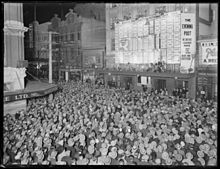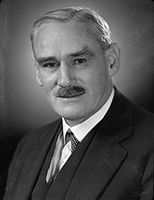1931 New Zealand general election
| |||||||||||||||||||||||||||||||||||||||||||||||||||||||||||||||||||||||||||||||||||
All 80 seats in the New Zealand House of Representatives 41 seats were needed for a majority | |||||||||||||||||||||||||||||||||||||||||||||||||||||||||||||||||||||||||||||||||||
|---|---|---|---|---|---|---|---|---|---|---|---|---|---|---|---|---|---|---|---|---|---|---|---|---|---|---|---|---|---|---|---|---|---|---|---|---|---|---|---|---|---|---|---|---|---|---|---|---|---|---|---|---|---|---|---|---|---|---|---|---|---|---|---|---|---|---|---|---|---|---|---|---|---|---|---|---|---|---|---|---|---|---|---|
| Turnout | 714,511 (83.3%) | ||||||||||||||||||||||||||||||||||||||||||||||||||||||||||||||||||||||||||||||||||
| |||||||||||||||||||||||||||||||||||||||||||||||||||||||||||||||||||||||||||||||||||
 Results of the election. | |||||||||||||||||||||||||||||||||||||||||||||||||||||||||||||||||||||||||||||||||||
| |||||||||||||||||||||||||||||||||||||||||||||||||||||||||||||||||||||||||||||||||||
The 1931 New Zealand general election was a nationwide vote to determine the shape of the New Zealand Parliament's 24th term. It resulted in the newly formed coalition between the United Party and the Reform Party remaining in office as the United–Reform Coalition Government, although the opposition Labour Party made some minor gains despite tallying more votes than any other single party.
Background
[edit]In the 1928 election, the Reform Party won 28 seats to the United Party's 27 seats. Shortly after the election the Reform Party lost a vote of no-confidence and the United Party managed to form a government, the United Government, with the support of the Labour Party, with governing Reform Party going into the opposition. In 1931, however, the agreement between United and Labour collapsed due to differing opinions on how to counter the Great Depression. The Reform Party, fearing that the Depression would give Labour a substantial boost, reluctantly agreed to form a coalition with United to avert elections. By forming a coalition, United and Reform were able to blunt Labour's advantage, ending the possibility of the anti-Labour vote being split.
The election
[edit]The date for the main 1931 elections was 2 December, a Wednesday. Elections to the four Māori electorates were held the day before. 874,787 people were registered to vote, and there was a turnout of 83.3%. This turnout was below average for the time period.
The number of seats was 80, a number which had been fixed since 1902.[1] However, in four electorates (Bay of Plenty, Oroua, Pahiatua, Waitomo) there was only one candidate.[2][3]
Results
[edit]
The 1931 election saw the recently formed governing coalition retain office as the United–Reform Coalition, winning fifty-one seats, including four independents. This was a drop of four seats from what the two parties had won in the previous elections, but was still considerably better than many had expected given the economic situation. The Labour Party won twenty-four seats, a gain of five. In the popular vote (including pro-coalition independents), the coalition won 54.0% of the vote, down from the 66.1% that the two parties had won previously. Labour won 34.3%. The only other party to gain a place in Parliament was the Country Party, which won a single seat. Four other independents were elected. Four candidates were elected unopposed: Walter Broadfoot in Waitomo, John Cobbe in Oroua, Alfred Ransom in Pahiatua, and Kenneth Williams in Bay of Plenty.[4]
Party totals
[edit]
 | ||||||||
|---|---|---|---|---|---|---|---|---|
| Election results | ||||||||
| Party | Leader | Votes | Percentage | Seats | change | |||
| Reform | Gordon Coates | 190,170 | 26.60 | 54.03 | 28 | ±0 | ||
| United | George Forbes | 120,801 | 16.90 | 19 | -8 | |||
| Independents (in support of Coalition) | 75,069 | 10.53 | 4 | +3 | ||||
| Labour | Harry Holland | 244,867 | 34.27 | 24 | +5 | |||
| Country Party | Harold Rushworth | 16,710 | 2.34 | 1 | ±0 | |||
| Ratana | 7,154 | 1.00 | 0 | ±0 | ||||
| Independents | 66,894 | 8.36 | 4 | -1 | ||||
| Total | 714,511 | 100% | 80 | |||||
Votes summary
[edit]The following table shows the detailed results:
Key
Reform Labour United Country Party Independent Liberal Ratana Independent
Table footnotes:
- ^ For some biographical details of James Kerr refer to his father's article
- ^ For some biographical details of McLachlan refer to his grandfather's article
- ^ McMillan claimed to stand for the Reform Party, but he was not the official candidate, as the United–Reform Coalition endorsed William Polson, who ran as an Independent[27]
- ^ Bill Sullivan was a member of the United Party, but Charles Macmillan was the official candidate of the United–Reform Coalition, hence Sullivan stood as an Independent
- ^ The Reform and United parties could not agree on an official coalition candidate for the Timaru electorate, so neither Armstrong (Reform) nor Herbert Hall (United) were official candidates, and many sources show them as Independents
- ^ Ziman was the father of John Ziman[30]
- ^ Jull was the official candidate of the United–Reform Coalition
- ^ Ormond was the son of John Davies Ormond and the father of John Ormond
- Four of the eight independent MPs (Connolly, Hargest, McSkimming, and Polson) were aligned with the United–Reform Coalition, and are not classified as independents by some sources.
Notes
[edit]- ^ "General elections 1853–2005 - dates & turnout". Elections New Zealand. Archived from the original on 14 November 2014. Retrieved 12 January 2011.
- ^ Bassett 1982, p. 67.
- ^ Wilson 1985, p. 286.
- ^ "Nominations Close". Evening Post. Vol. CXII, no. 123. 20 November 1931. p. 11. Retrieved 3 August 2013.
- ^ McRobie 1989, pp. 87f.
- ^ Skinner 1932, pp. 1–10.
- ^ a b c d e f "Election Counts". Auckland Star. Vol. LXII, no. 291. 9 December 1931. p. 9. Retrieved 28 October 2014.
- ^ "Recount of Votes". Auckland Star. Vol. LXII, no. 289. 7 December 1931. p. 9. Retrieved 31 October 2014.
- ^ a b c "Parliamentary Elections". Auckland Star. Vol. LXII, no. 275. 20 November 1931. p. 5. Retrieved 7 November 2014.
- ^ "Page 4 Advertisements Column 4". Akaroa Mail and Banks Peninsula Advertiser. Vol. LV, no. 5636. 1 December 1931. p. 4. Retrieved 8 November 2014.
- ^ "Buller Electorate". The Evening Post. Vol. CXII, no. 127. 25 November 1931. p. 10. Retrieved 8 November 2014.
- ^ a b c d e "Election Results". Auckland Star. Vol. LXII, no. 290. 8 December 1931. p. 3. Retrieved 1 November 2014.
- ^ "Straight Grained". New Zealand Truth. No. 1197. 8 November 1928. p. 6. Retrieved 2 November 2014.
- ^ "John McCrae". Auckland War Memorial Museum. Retrieved 9 July 2022 – via Online Cenotaph.
- ^ "Dunedin North". Auckland Star. Vol. LXII, no. 264. 7 November 1931. p. 11. Retrieved 11 November 2014.
- ^ "Electoral". The New Zealand Herald. Vol. LXVIII, no. 21053. 11 December 1931. p. 22. Retrieved 15 November 2014.
- ^ "Electors' Choice". Auckland Star. Vol. LXII, no. 286. 3 December 1931. p. 8. Retrieved 1 November 2014.
- ^ "A Coalition Certainty". The Evening Post. Vol. CXII, no. 120. 17 November 1931. p. 10. Retrieved 29 June 2014.
- ^ "In Canterbury". Auckland Star. Vol. LXII, no. 281. 27 November 1931. p. 8. Retrieved 16 November 2014.
- ^ Gustafson, Barry. "Archer, John Kendrick". Dictionary of New Zealand Biography. Ministry for Culture and Heritage. Retrieved 8 April 2011.
- ^ "Notice of Nominations received and Polling Places appointed". Rodney and Otamatea Times, Waitemata and Kaipara Gazette. 25 November 1931. p. 7. Retrieved 21 November 2014.
- ^ "Notice of Nominations Received and Polling Places Appointed". Akaroa Mail and Banks Peninsula Advertiser. Vol. LV, no. 5634. 24 November 1931. p. 2. Retrieved 22 November 2014.
- ^ "Mr McDougall Opposed". The Evening Post. Vol. CXII, no. 120. 17 November 1931. p. 10. Retrieved 24 November 2014.
- ^ "Public Notices". Ellesmere Guardian. Vol. LII, no. 99. 11 December 1931. p. 1. Retrieved 24 November 2013.
- ^ "Opposing Mr Atmore". The Evening Post. Vol. CXII, no. 110. 5 November 1931. p. 10. Retrieved 27 November 2014.
- ^ "Electoral". The New Zealand Herald. Vol. LXVIII, no. 21051. 9 December 1931. p. 18. Retrieved 2 December 2014.
- ^ "Stratford Electorate". The New Zealand Herald. Vol. LXVIII, no. 21029. 13 November 1931. p. 11. Retrieved 6 December 2014.
- ^ "Reform Triumph". The Northern Advocate. 18 June 1925. p. 5. Retrieved 15 December 2014.
- ^ Kerr, Stephen (2003). "Good Old Clyde": Clyde Carr M.P., Timaru and the Art of Incumbency, 1928–1962 (PDF) (Thesis). University of Canterbury. p. 66. Retrieved 16 December 2014.
- ^ "Ziman, John Michael" (PDF). Oxford University Press. Retrieved 16 December 2014.
- ^ Facer, Wayne Arthur Pickard (2012). "In New Zealand: Timaru 1923–1925". William Jellie: Unitarian, Scholar and Educator (PDF) (M.Phil.). Massey University. Retrieved 14 March 2015.
- ^ "Parliamentary Elections". Auckland Star. Vol. LXII, no. 275. 20 November 1931. Retrieved 29 October 2014.
- ^ "Declaration of Result of Poll for the Electoral District of Wallace". Otautau Standard and Wallace County Chronicle. Vol. XXVII, no. 1349. 15 December 1931. p. 2. Retrieved 15 March 2015.
- ^ a b c d "Declaration of Result of Poll for the Electoral District of Wellington Suburbs". The Evening Post. Vol. CXII, no. 140. 10 December 1931. p. 2. Retrieved 5 March 2014.
- ^ "Coalition Selection". The Evening Post. Vol. CXII, no. 117. 13 November 1931. p. 8. Retrieved 17 March 2015.
References
[edit]- Bassett, Michael (1982). Three Party Politics in New Zealand 1911-1931. Auckland: Historical Publications. ISBN 0-86870-006-1.
- McRobie, Alan (1989). Electoral Atlas of New Zealand. Wellington: GP Books. ISBN 0-477-01384-8.
- Skinner, W. A. G. (1932). The General Election, 1931. Government Printer. Retrieved 2 November 2014.
- Wilson, James Oakley (1985) [First ed. published 1913]. New Zealand Parliamentary Record, 1840–1984 (4th ed.). Wellington: V.R. Ward, Govt. Printer. OCLC 154283103.




